As I crest over the hill, the valley opens in a sea of golden grasses. My faithful companion Ranger trots steadily at my side, tongue lolling as we push forward under the warm sun. This is our daily ritual – a revitalizing ramble in the countryside near our home.
For Ranger, our adventures are more than exercise. Our Australian Shepherd needs this time to expend his boundless energy and tap into those herding instincts inherent in his breed. Without it, his temperament can turn from Dr. Jekyll to Mr. Hyde, exhibiting aggression and other problematic behaviors.
As an Aussie owner and outdoor explorer who has navigated the unique temperament of this brilliant breed, I understand the challenges many owners face with aggression. Some studies show up to 20% of Australian Shepherds exhibit aggressive tendencies.
These concerning behaviors can erode the human-dog bond and harmony in the home. The good news? With patience, consistency, and evidence-based techniques, owners can tame the Aussie temper and promote peace. This article provides my top 8 tips to curb aggression in your Australian Shepherd.
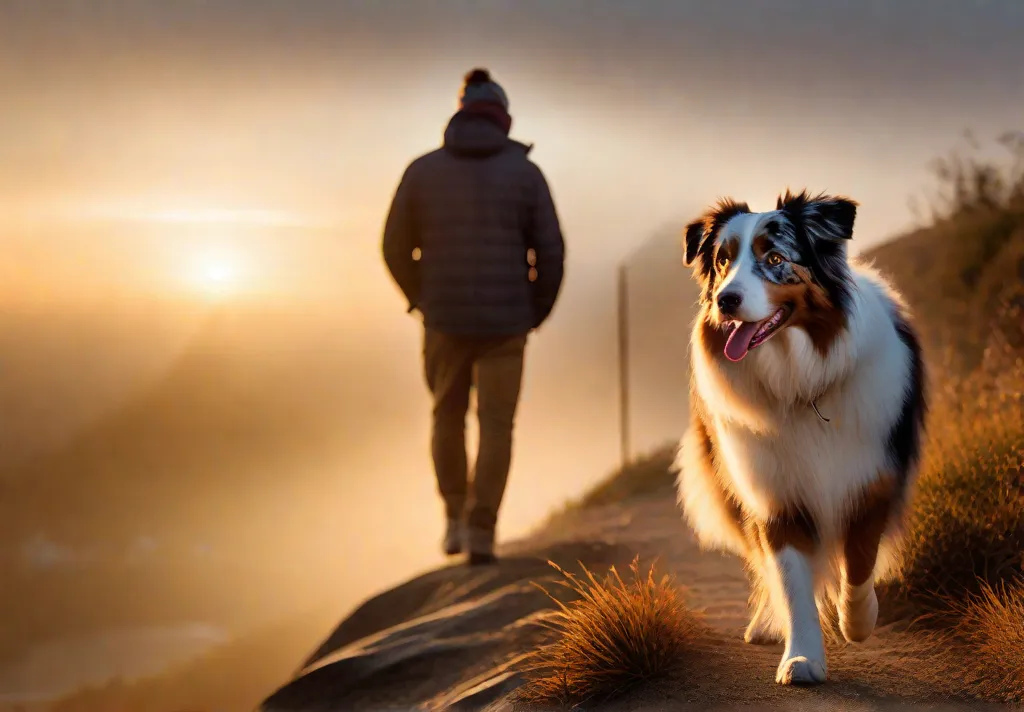
Table of Contents
- 1 Why Do Australian Shepherds Become Aggressive?
- 2 Tip #1: Drain Your Aussie’s Boundless Energy
- 3 Tip #2: Feed Your Aussie’s Active Brain
- 4 Tip #3: Prioritize Early Socialization
- 5 Tip #4: Establish a Predictable Routine
- 6 Tip #5: Communicate Clearly and Consistently
- 7 Tip #6: Learn Your Aussie’s Body Language
- 8 Tip #7: Try Group Training Classes
- 9 Tip #8: Seek Professional Help for Severe Cases
- 10 The Takeaway on Aussie Aggression
- 11 Related posts:
- 12 Ultimate Guide to Raising an Australian Shepherd Puppy
- 13 Unveiling the Red Merle Australian Shepherd: Key Facts & Insights
- 14 10 Australian Shepherd Life Hacks: Save Time & Stress
- 15 8 Secrets for a Healthy, Long-Lived Aussie
Why Do Australian Shepherds Become Aggressive?
To effectively curb aggression, we must first understand some of the common root causes in our beloved breed:
- Genetics – Certain lines may have a genetic predisposition towards aggressive behaviors. Proper socialization and training can help mitigate these innate tendencies.
- Lack of socialization – Without gradual exposure to new places, people, and other animals, Aussies may react fearfully or aggressively in unfamiliar situations.
- Boredom – These active, working dogs need constant stimulation. Without sufficient outlets, their frustration and pent-up energy can manifest as aggression.
- Medical conditions – Discomfort from an underlying condition can cause your dog to act aggressively, especially if startled or touched near the painful area.
- Dominance – Some Aussies may become aggressive while asserting dominance, especially around resources like food, toys, or attention.
- Fear or anxiety – Reactive or defensive aggression can stem from a fearful nature or stressful situation exceeding the dog’s confidence.
You can implement practical solutions only by identifying the root cause of your dog. As we explore tips to curb aggression below, keep these potential triggers in mind.
Tip #1: Drain Your Aussie’s Boundless Energy
As a herding breed developed to work long days in the fields, Australian Shepherds need vigorous activity to stay happy and balanced. My Ranger is no exception! Without an outlet for his energy, his frustration manifests in obsessive barking, nipping, and other stressful behaviors.

Aim for at least an hour of intense exercise daily. Activities that tap into their herding heritage are enriching, such as playing fetch, frisbee, or tug-of-war. Consider dog sports like agility, flyball, or herding trials if you’re up for a challenge. Not only will this vigorous exercise curb aggression, but it will strengthen your bond, too!
Tip #2: Feed Your Aussie’s Active Brain
The saying “a tired dog is a good dog” only goes so far with this brilliant breed. While physical activity is crucial, we must also stimulate their nimble minds!
Invest in puzzle toys and take training sessions to the next level to prevent boredom. Puzzle feeders that dispense treats or kibble as your dog paws and nudges them are a godsend for mental enrichment. Practice new tricks daily, even just for 5-10 minutes, to flex your Aussie’s clever cognitive abilities.
Mental exercise is equally as crucial as physical to prevent your Aussie from becoming frustrated and destructive. It’s a rewarding way to curb aggression while strengthening your bond through positive reinforcement training.
Tip #3: Prioritize Early Socialization
Did you know every puppy’s development has a critical socialization window? Generally, between 7 and 16 weeks of age, puppies undergo a developmental stage priming them to become comfortable with new experiences. By gently introducing your Aussie puppy to various people, dogs, environments, sights, and sounds during this window, you “socialize” them to handle novel situations confidently in adulthood.
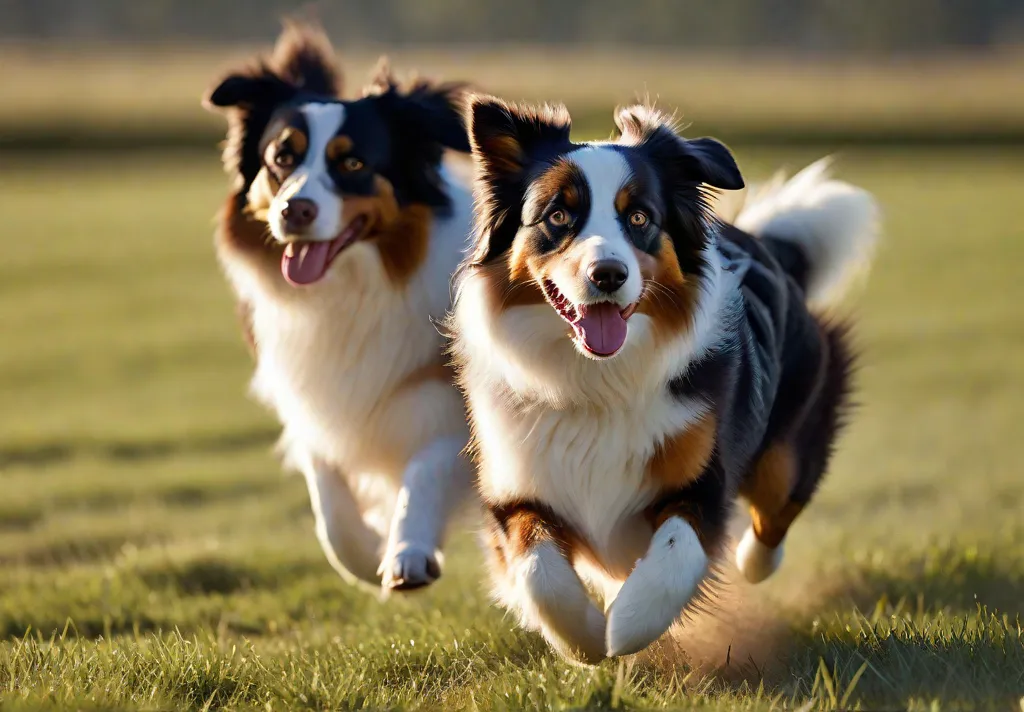
Without this early, positive exposure, Aussies may react fearfully or aggressively when faced with unfamiliar stimuli. Make socialization an essential part of your puppy’s training. Attend puppy kindergarten classes, invite friends over regularly, or people-watch at outdoor malls. Creating positive experiences builds confidence and trust in your growing pup.
Tip #4: Establish a Predictable Routine
Australian Shepherds thrive when they know what to expect. Establishing a consistent daily routine with regular feeding, potty breaks, training, exercise, and playtimes provides stability. Your Aussie will feel secure knowing when to expect dinner or when it’s time for your daily walk.
Of course, real life brings unpredictability! When routines inevitably get disrupted, cut your Aussie some slack. Changes and surprises can evoke stress that manifests aggressively without otherwise apparent triggers. Support your dog by keeping unexpected schedule changes to a minimum.
Tip #5: Communicate Clearly and Consistently
Aggression often arises from confusion and frustration over indistinct communication from owners. We must set clear guidelines and enforce them consistently.
Uphold household rules like not jumping on guests or begging at the table. Provide positive reinforcement like praise or treats when your Aussie demonstrates calm, polite behavior. Correct inappropriate behaviors the same way using a firm “No” or “Off” command.
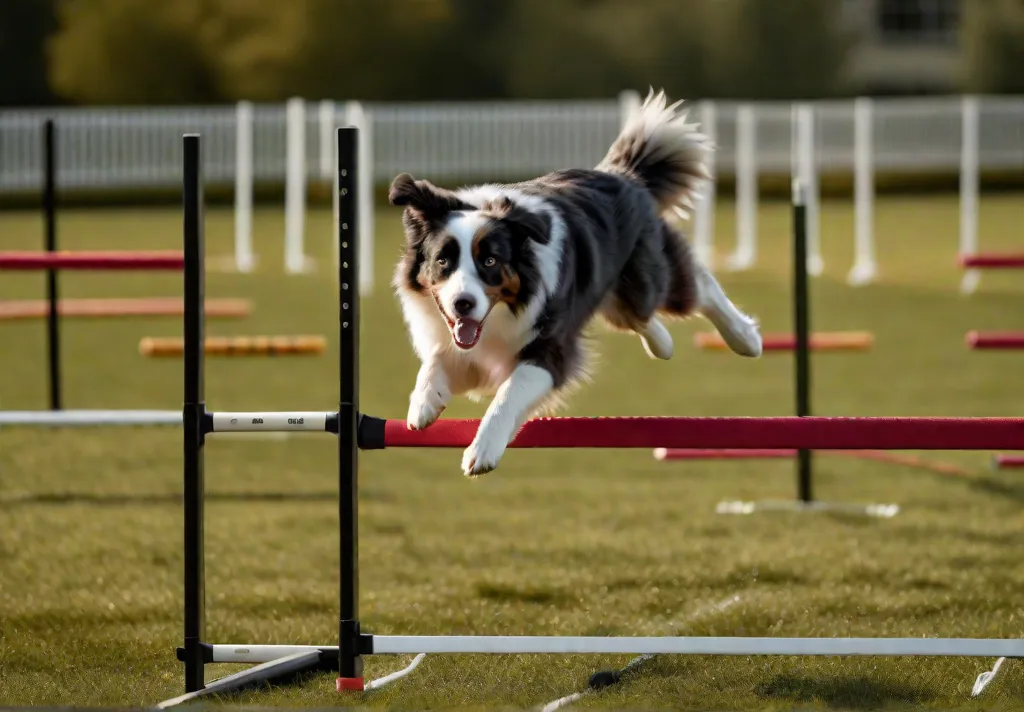
Clear communication paired with rewards for good behavior gives your dog a roadmap to earn your praise. Meanwhile, consequences for breaking the rules should be consistent, not punitive. Discipline should never involve physical punishment or aggression.
Tip #6: Learn Your Aussie’s Body Language
Preventing aggression hinges on understanding what your Australian Shepherd is thinking and feeling. Subtle body language conveys volumes before a bite or nip ever occurs. Be fluent in your dog’s nonverbal language by watching for signs like:
- Lip licking or yawning – Signals anxiety or stress
- Whale eye – Whites of eyes showing – Indicates fear
- Tucked tail – Apprehension or retreat signal
- Raised hackles – Sign of arousal, stress, or aggression
- Frozen body – Overall tension and uncertainty
Intervene at the first body language cue, signaling discomfort by redirecting your Aussie’s attention or removing them from the situation. Addressing triggers before aggression erupts is essential to reinforce positive behaviors.
Tip #7: Try Group Training Classes
While some basic training can happen at home, group classes by qualified professionals take the effort to the next level. Puppy and obedience classes tailored to high-energy breeds like the Australian Shepherd provide structured environments for learning impulse control and social skills.
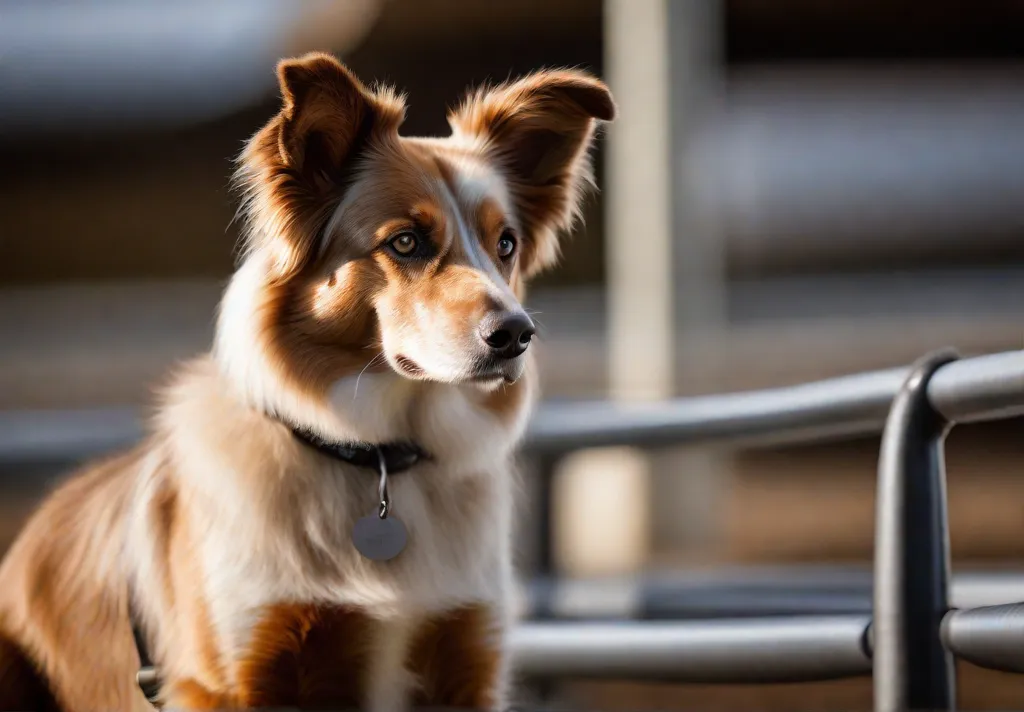
Under expert guidance, you’ll polish commands essential for an aggressive dog, like “Leave it,” “Look at me,” and “Sit-stay.” Classes also held owners accountable for applying new techniques consistently outside of class. Peer pressure works wonders!
Research trainers experienced specifically with Australian Shepherds and similar breeds. Avoid punishment-based methods; instead, ensure the trainer uses reward-based techniques.
Tip #8: Seek Professional Help for Severe Cases
Despite your best efforts, some Aussies develop dangerous levels of aggression that risk the safety of pets and people in the home. In these scenarios, enlisting help from veterinary and behavior experts is critical. They can assess if an underlying condition is causing the behavior and design an effective treatment plan.
Warning signs that your dog’s aggression warrants professional intervention include:
- Biting that breaks the skin or causes injury
- Unpredictable or sudden aggression without a clear trigger
- Intense protectiveness over food, toys, or other resources
- Aggression that fails to improve with training
Through medications, behavior modification therapy, and training adjustments, professionals can help you regain control. By law, dogs declared dangerous may face consequences like mandatory muzzling, relocation, or even euthanasia in some states. Expert help is essential for your Aussie’s well-being in these severe cases.
The Takeaway on Aussie Aggression
While Australian Shepherds may pose some unique temperament challenges, their unwavering loyalty and lively spirits make them beloved companions. Owners can curb aggressive tendencies and enjoy harmonious relationships with their pets by committing to consistent training, bountiful exercise, proper socialization, and meeting their healthcare needs.
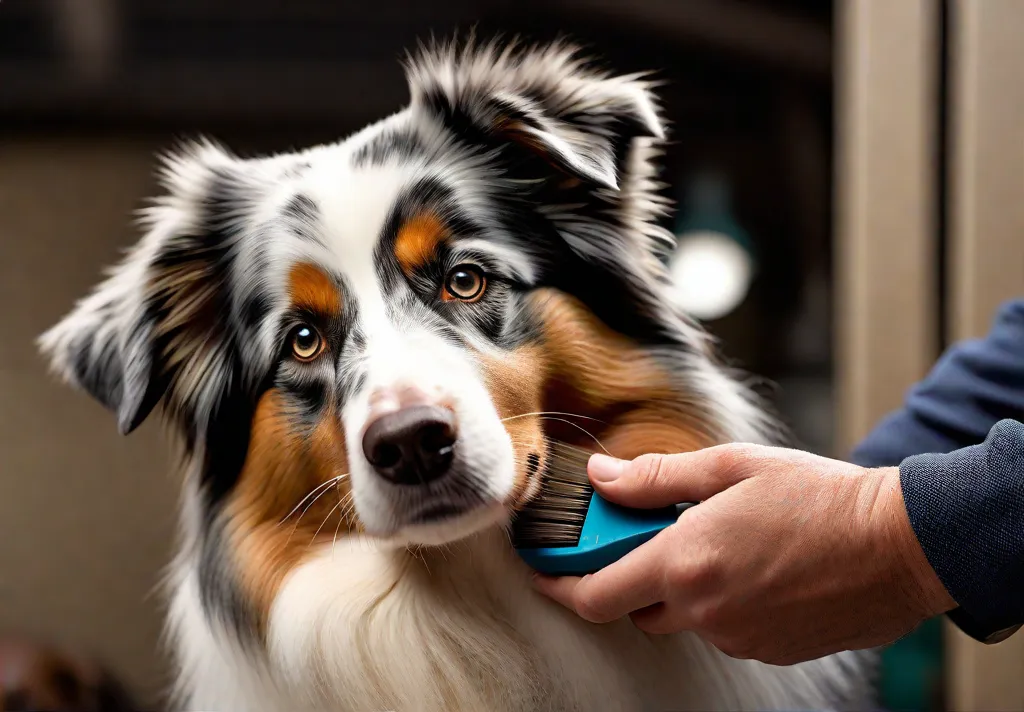
Patience and persistence are vital – no dog transforms overnight! But peaceful coexistence is achievable with an understanding of your Aussie’s needs and clear communication.
Now, if you excuse me, Ranger is giving me that look. I think it’s time for our afternoon adventure! Let’s hit the trails.
Frequently Asked Questions
Q: My Aussie gets aggressive with certain visitors but not others. What should I do?
A: This likely indicates your Australian Shepherd lacks sufficient socialization to feel entirely comfortable around strangers. Have newcomers offer tasty treats to your dog so they learn to associate guests with positivity. Supervise initial interactions closely and separate your dog if they seem overwhelmed. Persistence is key!
Q: Are Australian Shepherds aggressive toward other dogs or just people?
A: Aussies can be directly aggressive toward both people and other dogs. Proper socialization from puppyhood can help prevent aggressive tendencies by building confidence around strangers and other animals. Signs like tense body language raised hackles, or snarling indicate a reactive dog who needs gradual exposure to overcome fear or distrust.
Q: My Aussie gets aggressive when I try to take away food or toys. What should I do?
A: Resource guarding is a common trigger for Aussie aggression. Use positive reinforcement by offering treats when you approach, and teach “drop it” and “leave it” commands. Only take items when your dog is calm, not showing body language like lip licking or whale eye. If resource guarding is intense, consult a certified trainer or veterinary behaviorist.